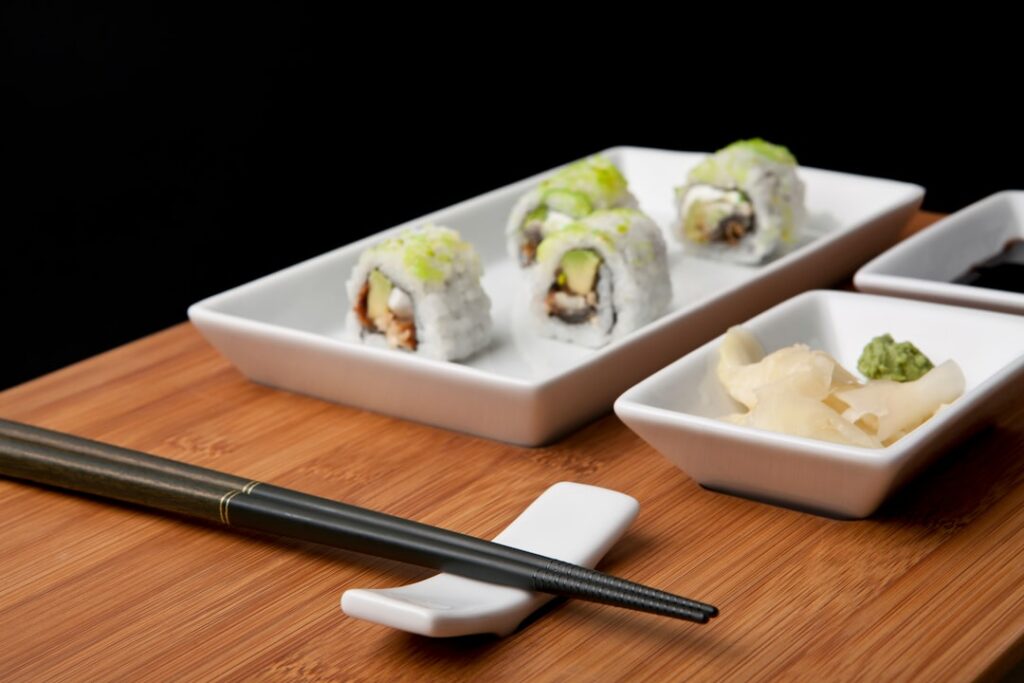Kampachi, also known as Almaco Jack or Greater Amberjack, is a species of fish that has a rich history in the culinary world. Native to the warm waters of the Pacific Ocean, Kampachi has been a staple in Japanese cuisine for centuries. The fish is highly prized for its firm texture, mild flavor, and versatility in cooking. In Japan, Kampachi is often enjoyed raw as sashimi or sushi, showcasing its delicate flavor and buttery texture. Over the years, Kampachi has gained popularity in other parts of the world, particularly in the United States, where it is now widely available in seafood markets and restaurants.
Kampachi has a long-standing tradition in Japanese culture, where it is considered a symbol of good luck and prosperity. In ancient times, the fish was often used in celebratory feasts and special occasions. Its significance in Japanese culture has led to the development of various traditional recipes that highlight the unique flavors and textures of Kampachi. As the demand for sustainable and high-quality seafood continues to grow, Kampachi has become a sought-after ingredient in modern cuisine, appreciated for its health benefits and culinary versatility.
Key Takeaways
- Kampachi has a rich history dating back to ancient Hawaiian and Japanese cultures, where it was highly prized for its flavor and nutritional benefits.
- Kampachi is a rich source of omega-3 fatty acids, protein, and essential vitamins, making it a great addition to a healthy diet.
- Kampachi can be prepared in a variety of ways, including grilling, searing, or even raw in sushi and sashimi dishes.
- Kampachi can be found at specialty seafood markets, high-end grocery stores, and online retailers that specialize in premium seafood products.
- When pairing Kampachi with wine, opt for a light, crisp white wine such as Sauvignon Blanc or Chardonnay to complement its delicate flavor.
- Sustainable farming practices for Kampachi include responsible aquaculture methods that minimize environmental impact and ensure the health and well-being of the fish.
- There are countless delicious recipes for Kampachi, including ceviche, grilled Kampachi with citrus marinade, and Kampachi poke bowls.
The Health Benefits of Kampachi
Kampachi is not only delicious but also packed with essential nutrients that offer numerous health benefits. This fish is an excellent source of high-quality protein, which is essential for muscle growth, repair, and overall health. Additionally, Kampachi is rich in omega-3 fatty acids, which are known for their heart-healthy properties. These fatty acids have been linked to reducing the risk of heart disease, lowering blood pressure, and improving overall cardiovascular health. Furthermore, Kampachi is a good source of vitamins and minerals, including vitamin D, vitamin B12, and selenium, all of which play crucial roles in supporting immune function, bone health, and metabolism.
In addition to its nutritional value, Kampachi is also low in mercury, making it a safe and healthy choice for seafood lovers. Its lean and protein-rich flesh makes it an ideal option for those looking to maintain a balanced diet without compromising on flavor. Whether grilled, baked, or enjoyed raw, Kampachi offers a delicious way to incorporate essential nutrients into your diet while indulging in a delectable dining experience.
How to Prepare Kampachi
When it comes to preparing Kampachi, there are numerous ways to showcase its delicate flavor and firm texture. One popular method is to enjoy it raw as sashimi or sushi, allowing the natural flavors of the fish to shine through. For those who prefer cooked dishes, grilling or searing Kampachi brings out its rich flavors and creates a crispy exterior while maintaining its tender interior. Baking or broiling Kampachi is another excellent option, as it allows for easy seasoning and pairs well with a variety of herbs and spices.
Kampachi can also be used in ceviche, where its mild flavor pairs perfectly with citrus juices and fresh herbs. Its firm texture holds up well in soups and stews, adding depth and richness to the dish. Regardless of the cooking method, it’s important to handle Kampachi with care to preserve its delicate texture and flavor. Whether marinated in a flavorful sauce or simply seasoned with salt and pepper, Kampachi offers endless possibilities for creating delicious and nutritious meals.
Where to Find Kampachi
| Location | Depth | Preferred Bait |
|---|---|---|
| Nearshore | 20-50 meters | Squid, shrimp |
| Offshore | 50-200 meters | Sardines, mackerel |
| Reefs | 10-30 meters | Crustaceans, small fish |
Kampachi can be found in select seafood markets, specialty grocery stores, and high-end restaurants that prioritize sustainable and high-quality seafood. Due to its growing popularity, Kampachi is becoming more widely available in various regions, making it easier for consumers to enjoy this delectable fish at home or when dining out. Many seafood markets offer fresh Kampachi fillets or steaks, allowing customers to select their preferred cuts for cooking at home.
For those who prefer dining out, upscale restaurants with a focus on seafood often feature Kampachi on their menus, prepared in a variety of creative and delicious ways. Additionally, some online seafood retailers offer fresh Kampachi for delivery, providing convenient access to this sought-after fish for those who may not have local access to it. Whether purchasing from a local market or ordering online, it’s important to choose reputable sources that prioritize sustainable fishing practices and offer high-quality products.
Pairing Kampachi with the Perfect Wine
Pairing Kampachi with the perfect wine can elevate the dining experience and enhance the flavors of this delectable fish. The mild and buttery flavor of Kampachi pairs beautifully with a variety of white wines that complement its delicate nature. A crisp and refreshing Sauvignon Blanc offers citrusy notes and bright acidity that harmonizes with the subtle flavors of Kampachi. Additionally, a Chardonnay with a touch of oak provides a creamy texture and hints of vanilla that enhance the richness of the fish without overpowering it.
For those who prefer red wine, a light-bodied Pinot Noir can be an excellent choice, offering soft tannins and red fruit flavors that complement the texture of Kampachi without overwhelming its delicate flavors. When selecting a wine to pair with Kampachi, it’s important to consider the cooking method and accompanying ingredients. Whether enjoying grilled Kampachi with fresh herbs or savoring it in a citrusy ceviche, the right wine can enhance the dining experience and create a harmonious balance of flavors.
Sustainable Farming Practices for Kampachi

As the demand for sustainable seafood continues to grow, responsible aquaculture practices have become increasingly important in ensuring the availability of high-quality fish like Kampachi. Sustainable farming practices for Kampachi focus on minimizing environmental impact, promoting animal welfare, and producing healthy and nutritious fish for consumers. This includes utilizing open-ocean aquaculture systems that allow fish to thrive in their natural habitat while minimizing pollution and waste.
Furthermore, sustainable farming practices prioritize responsible feed sourcing to reduce reliance on wild-caught fish for feed production. By using alternative protein sources such as plant-based ingredients and algae, sustainable aquaculture aims to minimize pressure on marine ecosystems while maintaining the nutritional quality of farmed fish. Additionally, strict monitoring of water quality and disease prevention measures are implemented to ensure the health and well-being of farmed Kampachi.
Exploring Different Kampachi Recipes
There are countless ways to enjoy Kampachi in a variety of delicious recipes that showcase its unique flavors and textures. One popular preparation is grilled Kampachi with a simple marinade of olive oil, lemon juice, garlic, and fresh herbs. The fish is grilled until lightly charred on the outside while remaining tender and flaky on the inside. Another favorite dish is Kampachi ceviche, where the fish is marinated in citrus juices, diced tomatoes, onions, and cilantro for a refreshing and zesty appetizer.
For those who prefer cooked dishes, baked Kampachi with a flavorful herb crust is a delightful option. The fish is coated with a mixture of breadcrumbs, herbs, and Parmesan cheese before being baked to golden perfection. Additionally, Kampachi can be used in soups and stews to add depth and richness to the dish. Whether enjoyed raw as sashimi or incorporated into a variety of cooked dishes, Kampachi offers endless possibilities for creating memorable meals that are both nutritious and delicious.
In conclusion, Kampachi’s rich history in Japanese cuisine has made it a sought-after ingredient in modern culinary practices around the world. Its health benefits, versatility in cooking methods, and delicate flavor make it a favorite among seafood enthusiasts. With sustainable farming practices ensuring its availability for future generations, Kampachi continues to be a prized ingredient that offers endless possibilities for creating delectable dishes that delight the senses.
Check out this related article on the benefits of kampachi for hair health at Dawn Bradley Hair. Learn how incorporating kampachi into your diet can promote strong, lustrous hair and overall scalp health. Discover the nutrients and properties of kampachi that make it a valuable addition to your beauty routine.
FAQs
What is kampachi?
Kampachi is a type of fish that is also known as amberjack or yellowtail. It is a popular fish in Japanese cuisine and is known for its rich, buttery flavor.
What does kampachi look like?
Kampachi has a sleek, torpedo-shaped body with a yellowish-green back and a silver-white belly. It has a distinctive yellow stripe that runs along its body.
Where is kampachi found?
Kampachi is found in the Pacific Ocean, particularly in the waters around Japan, Hawaii, and Mexico. It is also farmed in aquaculture operations in various parts of the world.
How is kampachi used in cooking?
Kampachi is often used in sashimi, sushi, and other raw preparations in Japanese cuisine. It can also be grilled, broiled, or seared, and is prized for its rich, fatty flesh.
Is kampachi healthy to eat?
Kampachi is a good source of protein and healthy omega-3 fatty acids. It is low in saturated fat and is a nutritious addition to a balanced diet.
Are there any concerns about eating kampachi?
Some environmental organizations have raised concerns about the sustainability of kampachi farming practices, particularly in relation to potential impacts on wild fish populations and marine ecosystems. Consumers are encouraged to seek out sustainably sourced kampachi.


